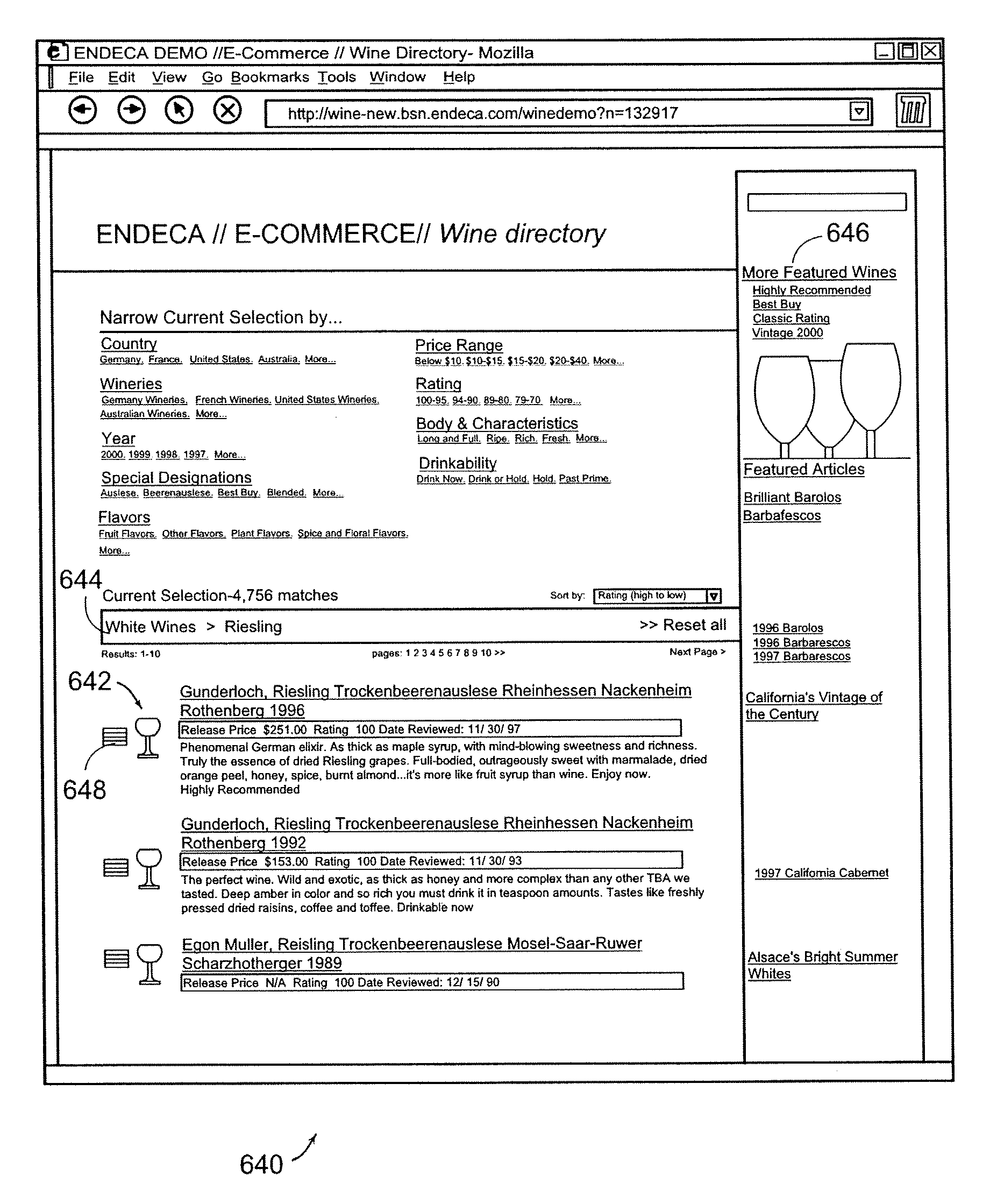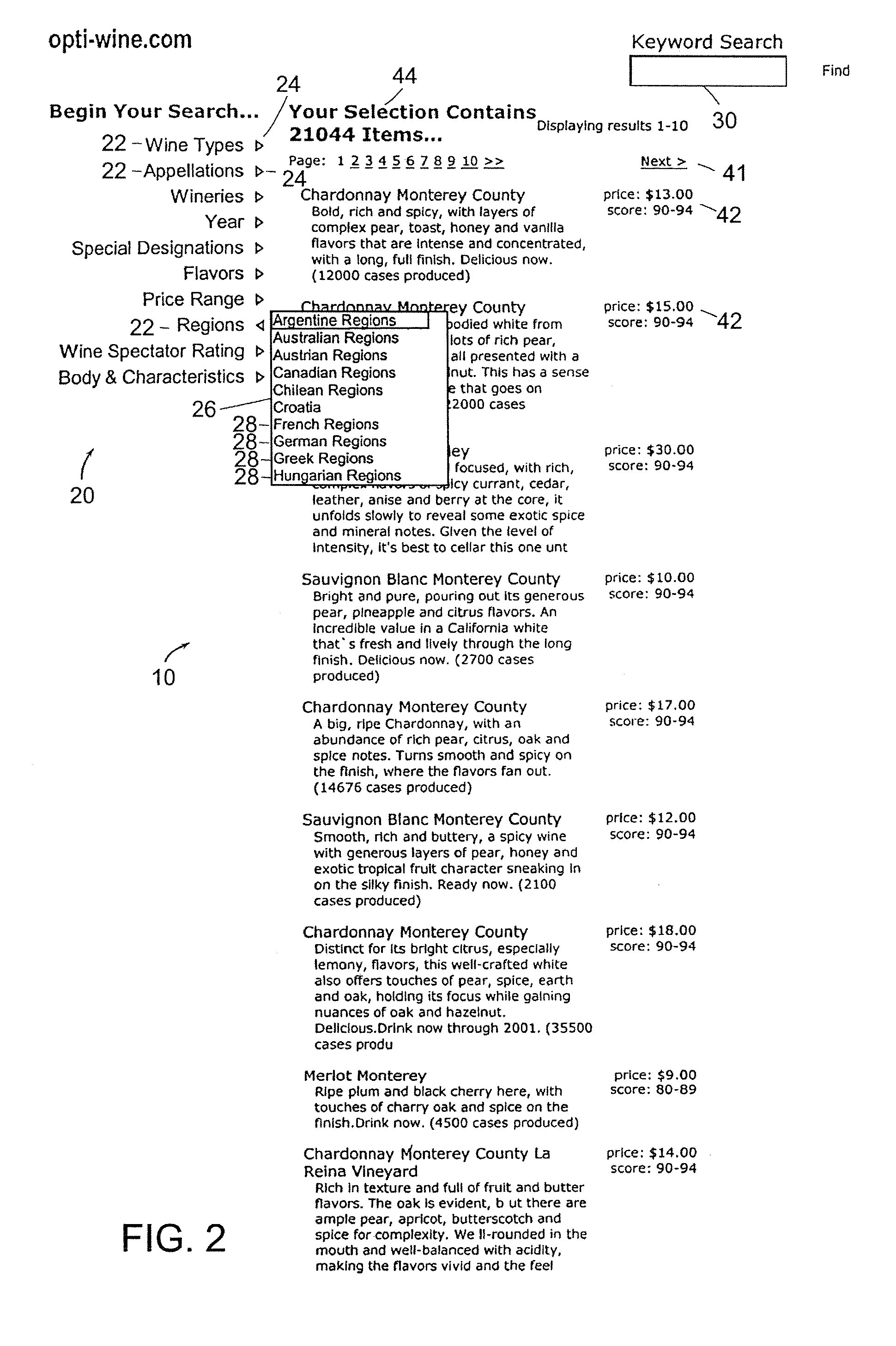System and method for manipulating content in a hierarchical data-driven search and navigation system
a content manipulation and hierarchical data technology, applied in the field of information search and navigation systems, can solve the problems of increasing difficulty in manipulating content presentation, increasing difficulty in retrieving information from a database of information, and increasing difficulty in identifying relevant materials
- Summary
- Abstract
- Description
- Claims
- Application Information
AI Technical Summary
Benefits of technology
Problems solved by technology
Method used
Image
Examples
Embodiment Construction
[0059]User Interface
[0060]FIG. 1 shows a user interface 10 to a hierarchical, data-driven search and navigation system. The search and navigation system operates on a collection of documents defined in a knowledge base. As is shown, the user is preferably presented with at least two alternative methods of using the search and navigation system: (1) by selecting terms to navigate through the collection of documents, or (2) by entering a desired query in a search box.
[0061]The search and navigation system preferably organizes documents by domain. The user interface 10 shown in FIGS. 1-9 is operating on a set of documents that are part of a wine domain. Preferably, a domain defines a portion of the collection of documents that reflects a natural grouping. Generally, the set of attributes used to classify documents in a domain will be a manageable subset of the attributes used to classify the entire collection of documents. A domain definition may be a type of product, e.g., wines or co...
PUM
 Login to View More
Login to View More Abstract
Description
Claims
Application Information
 Login to View More
Login to View More - R&D
- Intellectual Property
- Life Sciences
- Materials
- Tech Scout
- Unparalleled Data Quality
- Higher Quality Content
- 60% Fewer Hallucinations
Browse by: Latest US Patents, China's latest patents, Technical Efficacy Thesaurus, Application Domain, Technology Topic, Popular Technical Reports.
© 2025 PatSnap. All rights reserved.Legal|Privacy policy|Modern Slavery Act Transparency Statement|Sitemap|About US| Contact US: help@patsnap.com



